In the UK construction industry, securing larger projects requires more than just skill and expertise, it demands a professional image and a compelling presentation that builds trust with clients, architects, and developers. Printed marketing materials are often overlooked in a digital-first world, yet printed marketing collateral for builders UK remains a powerful tool to enhance visibility, credibility, and client engagement.
This detailed guide explores why printed collateral is vital, what types work best, and how builders can strategically use them to win bigger contracts. Backed with real insights, stats, and practical steps, the blog provides a comprehensive view suitable for professional tradesmen looking to elevate their brand through tangible marketing.
Why Printed Marketing Collateral Matters for UK Builders
Despite growing digital engagement, printed materials maintain a longer shelf life and create physical impressions that digital content can’t replicate. Studies reveal that print marketing often achieves higher conversion rates than digital alone, and over 85% of consumers in the UK remember printed ads better than screen-based ads.
For builders bidding on significant projects or pitching to commercial clients, distributing professionally designed brochures, capability statements, portfolios, and proposals often tilts decisions in their favour. Unlike emails or websites that can be overlooked or forgotten, a well-crafted printed leaflet or business card frequently remains on desks or in meeting rooms as a reference landmark.
Key Types of Printed Marketing Collateral for Builders UK
UK builders use a variety of print materials depending on target clients and project scope. The most effective include:
1. Professional Brochures and Capability Statements
These detailed booklets showcase completed projects, technical expertise, certifications, client testimonials, and unique selling points. High-quality visuals combined with precise copy communicate reliability and scale. Architects and procurement teams often expect capability brochures during RFP (Request for Proposal) stages.
2. Project Portfolios and Case Studies
Focused project portfolios with client endorsements and “before & after” photos illustrate tangible results. Printed case studies distributed during site visits or follow-up meetings build confidence, proving experience beyond claims.
3. Business Cards and Letterheads
Simple but essential, these touchpoints build brand recognition and professionalism. Consistent branding using quality materials positions builders as trustworthy and organized.
4. Flyers and Leaflets for Local Marketing
Targeted at homeowners and smaller clients, printed flyers featuring seasonal offers or new service announcements help builders increase local leads. These materials work well for direct mail campaigns or partnerships with local estate agents and suppliers.
5. Safety and Compliance Certificates
Printed certificates reflecting health & safety compliance or industry accreditations shown during client meetings add substantial credibility.
6. Trade Show and Networking Collateral
Pull-up banners, branded folders, and handouts used at trade exhibitions or contractor networking events increase visibility and leave lasting impressions.
How Printed Collateral Supports Larger Project Wins
Building Trust and Tangibility
Nothing replaces a physical brochure or well-presented proposal to build rapport and professionalism, especially with decision-makers who handle multiple bids simultaneously. Printed collateral is a tactile reminder of a builder’s commitment and attention to detail.
Supporting Complex Bids
Larger construction tenders often require multi-layered documentation. Printed project summaries, certifications, and timelines consolidate key points in easy-to-digest formats to help review panels and senior management.
Reinforcing Brand Presence
Brand consistency across printed collateral and digital platforms strengthens recall. Clients reviewing proposals weeks after initial meetings will remember you by your branding style and printed leave-behinds as much as your verbal pitch.
Elevating Perceived Value
Meticulously designed and printed marketing materials communicate premium service and reliability, which justify higher pricing and longer-term engagements.
Designing Effective Printed Marketing Collateral
Personalisation and Storytelling
Including real customer testimonials, detailed project challenges, and resolution stories make printed collateral authentic and relatable. Case studies showing problem-solving build stronger client trust than generic claims.
High-Quality Visuals
Professional photography and clean layouts ensure your portfolio and brochures feel premium. Poor print quality or pixelated images damage credibility.
Clear Messaging and Calls-to-Action
Every piece should include simple next steps like contact info, website URL, or QR codes leading to project video tours or digital portfolios.
Consistency Across Materials
Maintain unified color schemes, fonts, and tone to ensure all print materials reinforce a single strong brand image.
Real UK Builder Experiences with Printed Collateral
- A Yorkshire-based construction firm’s investment in updated brochures and project portfolios, combined with professional site visits, contributed to securing contracts worth over £1 million annually from commercial clients.
- Mid-sized homebuilders in the South East praised consistent use of branded proposals and certificates for building trust with local councils and architectural firms, speeding up planning approvals and contract awards.
- Trade Mastermind-recommended companies using printed client testimonial booklets alongside digital campaigns reported a boosted client referral rate by 40%.
Printed Collateral vs. Digital Marketing: A Perfect Partnership
While digital marketing drives awareness and initial engagement, print collateral excels in deeper client persuasion and closing. Combining both approaches amplifies impact:
- Use digital ads and SEO to attract prospects.
- Send personalised printed quotes, portfolios, and certificates to seal deals.
- Incorporate QR codes on printed materials linking back to videos and online reviews.
This integrated approach is especially effective in the UK construction market, where relationships build over time and trust is earned through multiple channels.
Practical Tips for UK Builders Investing in Printed Collateral
- Invest in professional design services to avoid generic or outdated-looking materials.
- Print manageable quantities tailored to client meetings, local mail-outs, or events to maintain freshness.
- Regularly update content to reflect new projects, certifications, and client successes.
- Use durable, high-quality materials to withstand handling and weather where applicable (e.g., site hoardings).
Conclusion
For UK builders aiming to win larger, more lucrative projects, printed marketing collateral for builders UK remains an essential weapon in the marketing arsenal. It creates a physical, trustworthy impression that complements digital presence, tells the real story behind your expertise, and supports complex procurement processes with professionalism and clarity. By investing thoughtfully in quality print assets, builders can differentiate themselves, deepen client trust, and ultimately secure bigger contracts.
Tradedesign.uk specialises in guiding UK trades on branding and marketing strategies, including print collateral solutions custom-built to support your growth ambitions, contact us to start elevating your project wins today.






